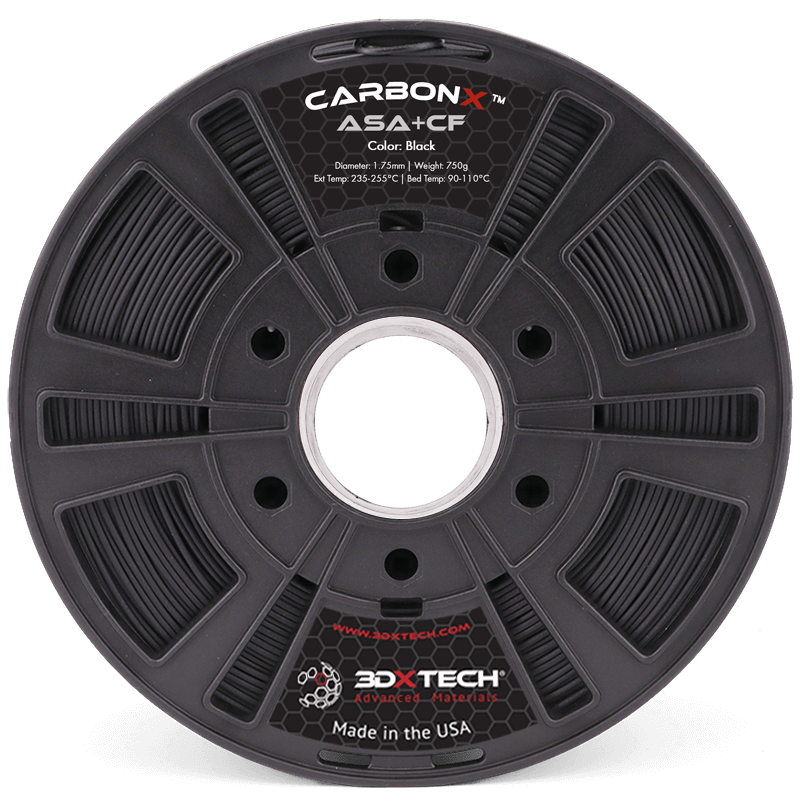3DXTECH
FIBERX ASA+CF
FIBERX ASA+CF
Couldn't load pickup availability
Share
CarbonX™ ASA+CF is made using our popular ASA compounded with high-modulus carbon fiber. This material offers excellent UV-stability, matte surface finish, ease of printing, strength & stiffness, coupled with superior dimensional stability. We found our new favorite material to print structural parts!
Spool Size: 750g
Diameter: 1.75mm
CarbonX™ ASA+CF is a high-performance carbon fiber reinforced ASA [acrylonitrile styrene acrylate] filament ideal for anyone that desires a structural component with high modulus, excellent surface quality, dimensional stability, light weight, and ease of printing. Made using 15% High-Modulus Carbon Fiber (not carbon powder or milled carbon fiber). Made using our very popular ASA resin and premium carbon fiber.
Benefits of CarbonX™ ASA+CF Include:
- Stiff, high-modulus, industrial-grade parts off many 3D printers available on the market today
- Greatly improved stiffness, modulus, and dimensional stability thanks to the addition of carbon fiber reinforcement
- Easier to print than most industrial-grade materials
- ASA is UV-stable and suitable for outside use
- Higher melting point than PLA or PETG
Filament Specifications:
1.75mm +/- 0.05mm in diameter

Carbon Fiber Reinforced Filament
What Is It?
Fibers 5-10 micrometers wide made of carbon. The fibers are aligned following the axis of the material.
This, along with their physical makeup, are what give this material its excellent properties.
CF_ASA_v1
Recommended Print Settings:
- Extruder: 235-255°C
- Bed Temp: 90-110°C
- Nozzle: We currently recommend a hardened steel nozzle with a minimum diameter of 0.4mm.
- Other: Ideal layer height is 60% of nozzle diameter. We do not recommend printing layers smaller than 0.2mm with carbon fiber reinforced filaments.
- Bed Prep: Magigoo Bed Prep Adhesive gives us the best results
- Heated Chamber: Recommended, a chamber helps reduce warping.
- Supports: Water soluble AquaTek X1 USM works great for complex parts.
- Drying Instructions: 80°C for 4 hours.
Abrasive Material
This material is particularly abrasive among 3D printing filaments. Users may find standard brass nozzles are chewed through very quickly compared to standard wear and tear. When worn through, the nozzle diameter will widen inconsistently and the printer will experience extrusion issues.
Use hardened steel nozzles with this filament to maximize toolhead life and quality of your prints!
Because of this, it’s strongly recommended this material be printed through a hardened steel nozzle rather than a softer metal. Hardened steel nozzles can often be inexpensive and easily installed depending on your printer manufacturer’s instructions.



